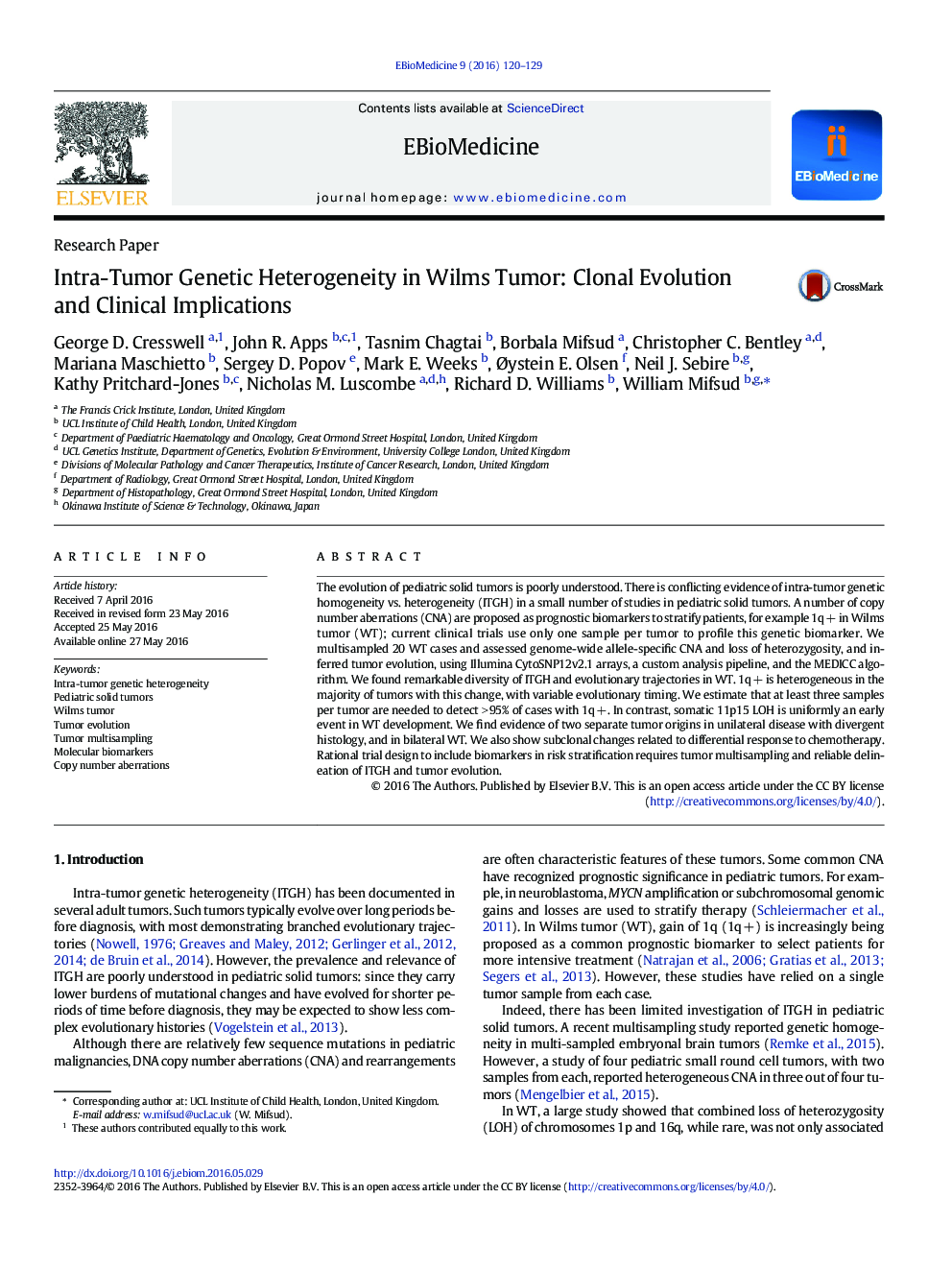| Article ID | Journal | Published Year | Pages | File Type |
|---|---|---|---|---|
| 2120710 | EBioMedicine | 2016 | 10 Pages |
•There is remarkable diversity of intratumor genetic heterogeneity and evolutionary trajectories.•Gain of 1q is frequently heterogeneous and shows variable evolutionary timing.•11p15 CNNLOH is consistently an early event in Wilms tumorigenesis.•Rational biomarker-based treatment stratification in Wilms tumors requires multisampling.We have shown that Wilms tumor (WT), the commonest pediatric kidney cancer, shows a range of evolutionary trajectories. We also found that gain of the long arm of chromosome 1 (1q +) may occur both early or late in the evolution of WT. 1q + is associated with a poorer outcome and is proposed for use in choosing patients for more intensive treatment, but we show that in order to detect it reliably, future trials require testing for this biomarker in multiple samples per tumor.
The evolution of pediatric solid tumors is poorly understood. There is conflicting evidence of intra-tumor genetic homogeneity vs. heterogeneity (ITGH) in a small number of studies in pediatric solid tumors. A number of copy number aberrations (CNA) are proposed as prognostic biomarkers to stratify patients, for example 1q + in Wilms tumor (WT); current clinical trials use only one sample per tumor to profile this genetic biomarker. We multisampled 20 WT cases and assessed genome-wide allele-specific CNA and loss of heterozygosity, and inferred tumor evolution, using Illumina CytoSNP12v2.1 arrays, a custom analysis pipeline, and the MEDICC algorithm. We found remarkable diversity of ITGH and evolutionary trajectories in WT. 1q + is heterogeneous in the majority of tumors with this change, with variable evolutionary timing. We estimate that at least three samples per tumor are needed to detect > 95% of cases with 1q +. In contrast, somatic 11p15 LOH is uniformly an early event in WT development. We find evidence of two separate tumor origins in unilateral disease with divergent histology, and in bilateral WT. We also show subclonal changes related to differential response to chemotherapy. Rational trial design to include biomarkers in risk stratification requires tumor multisampling and reliable delineation of ITGH and tumor evolution.
